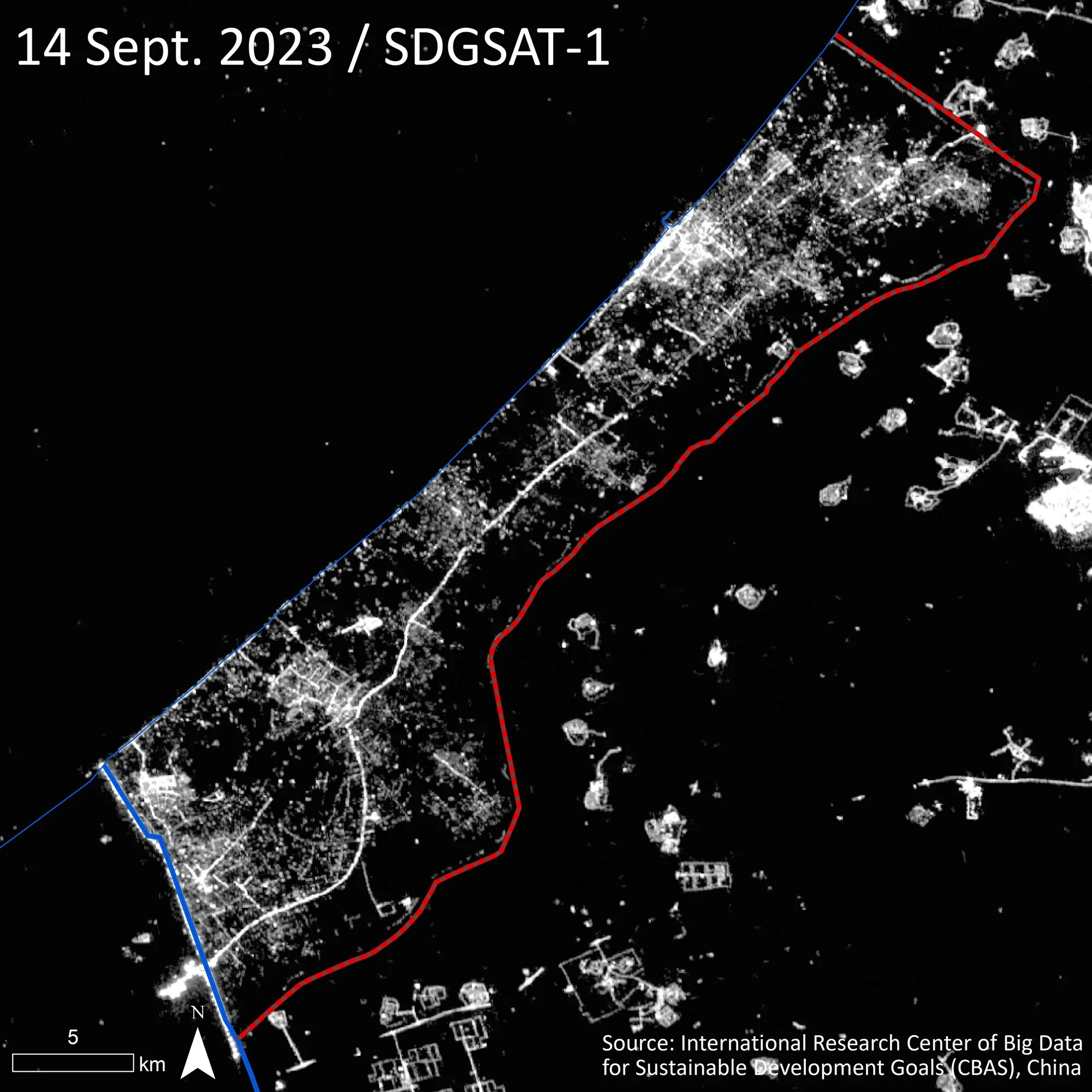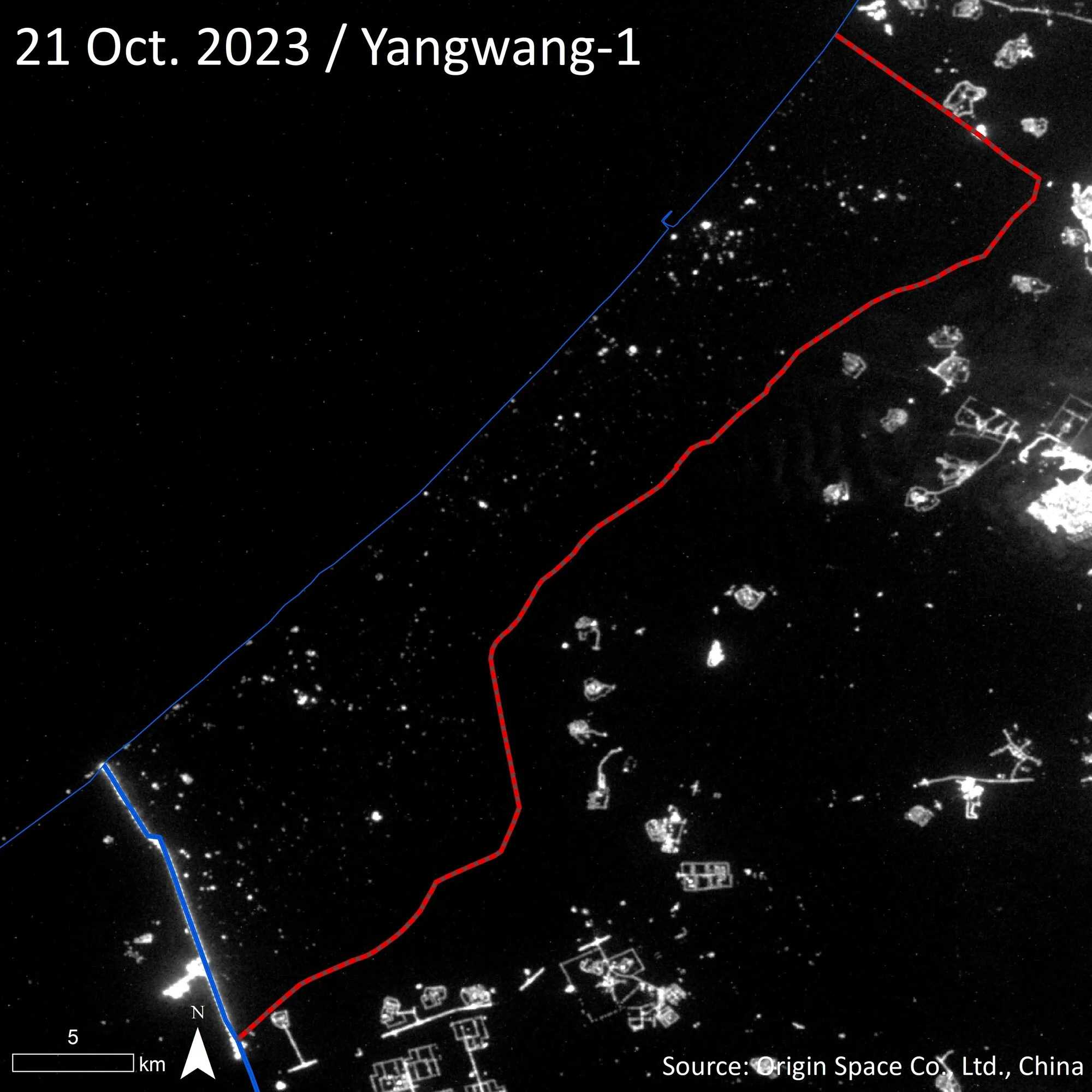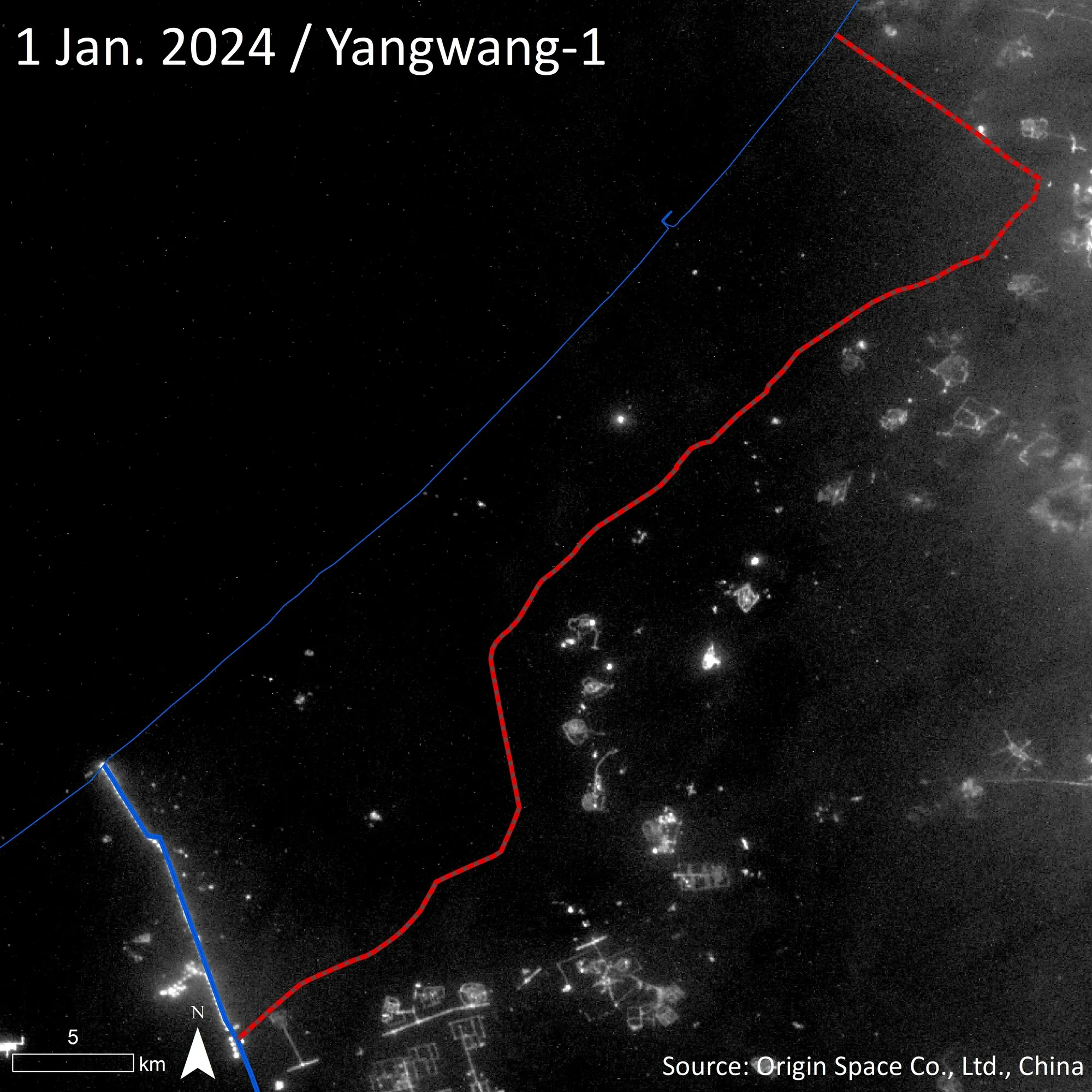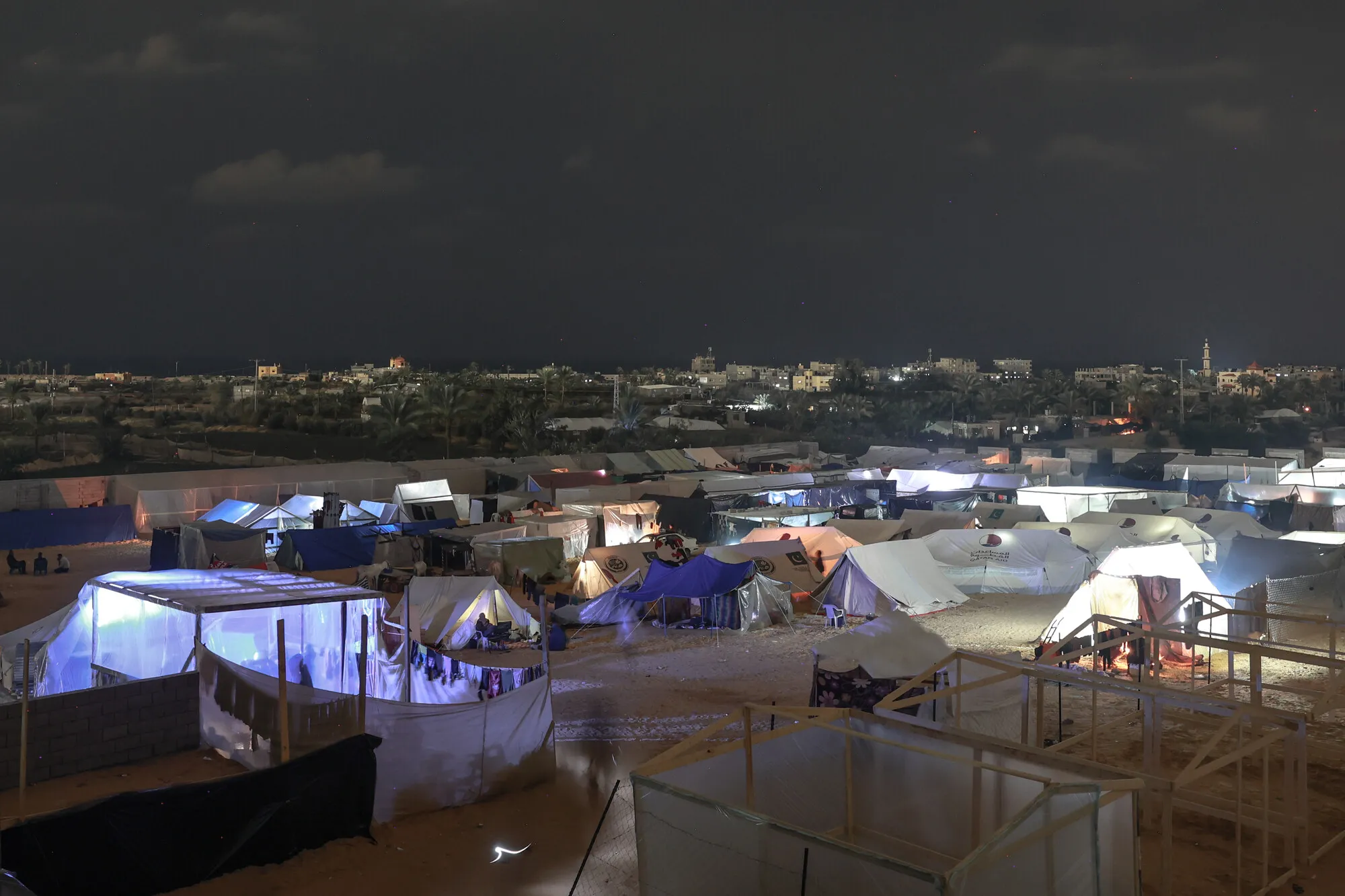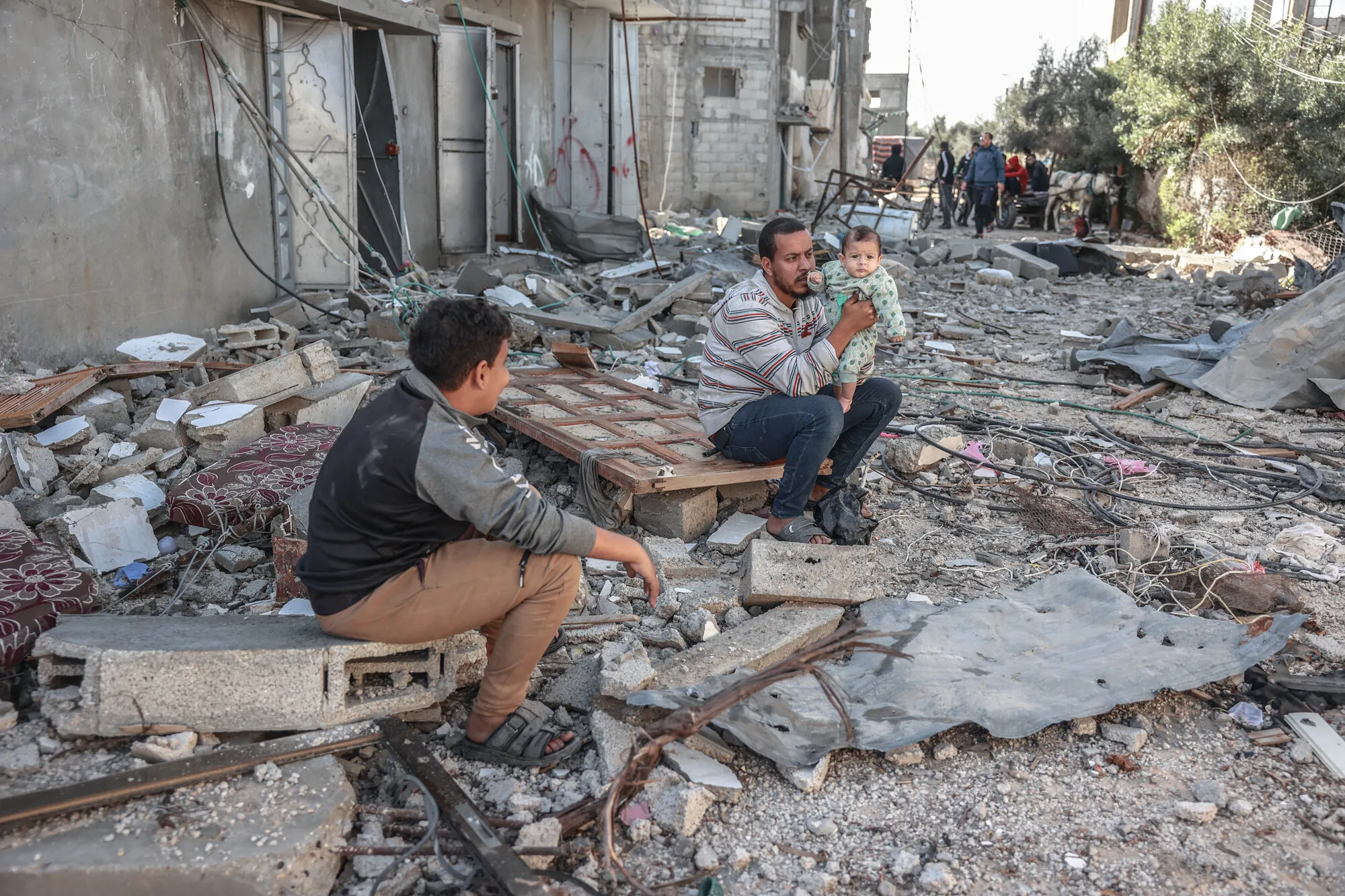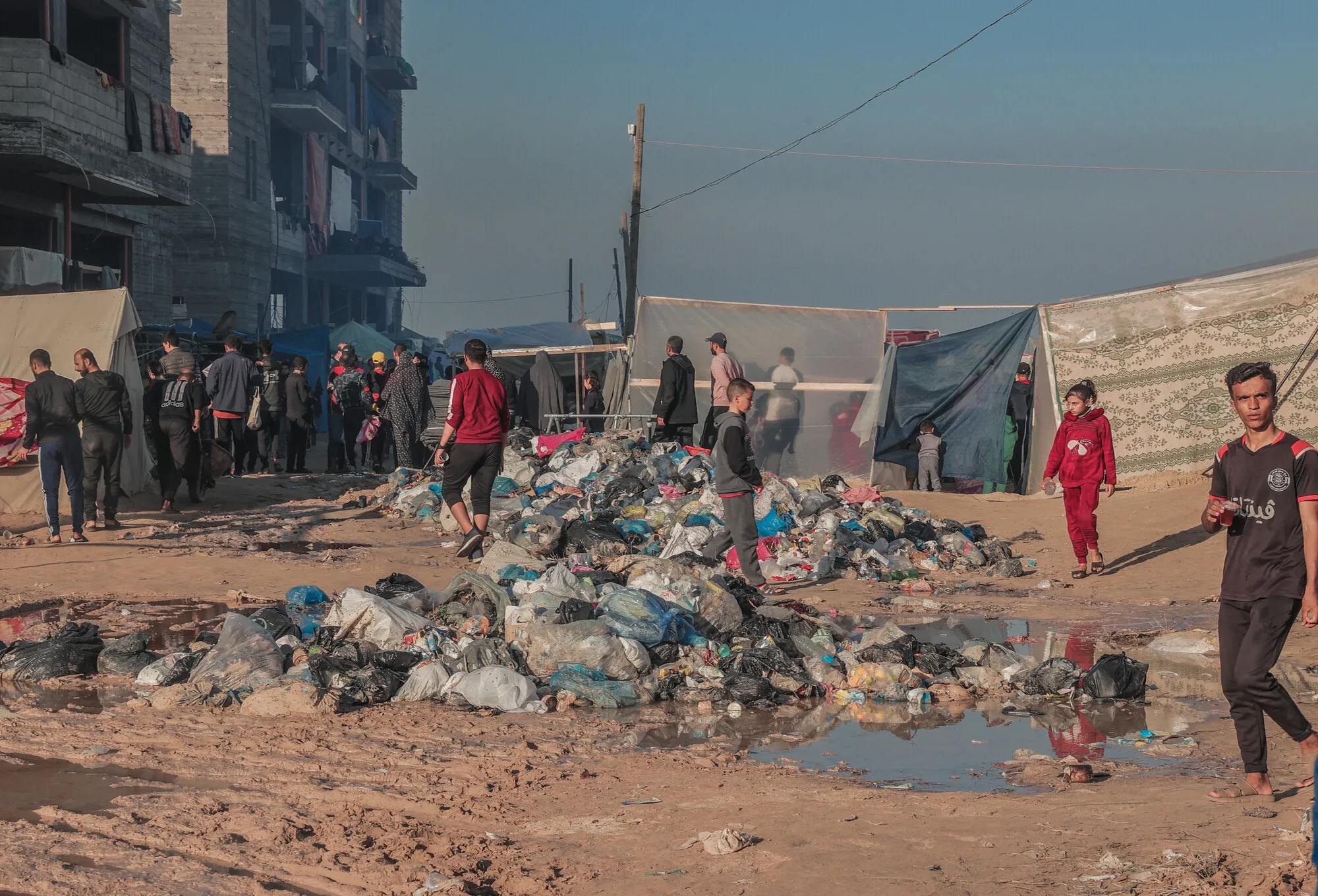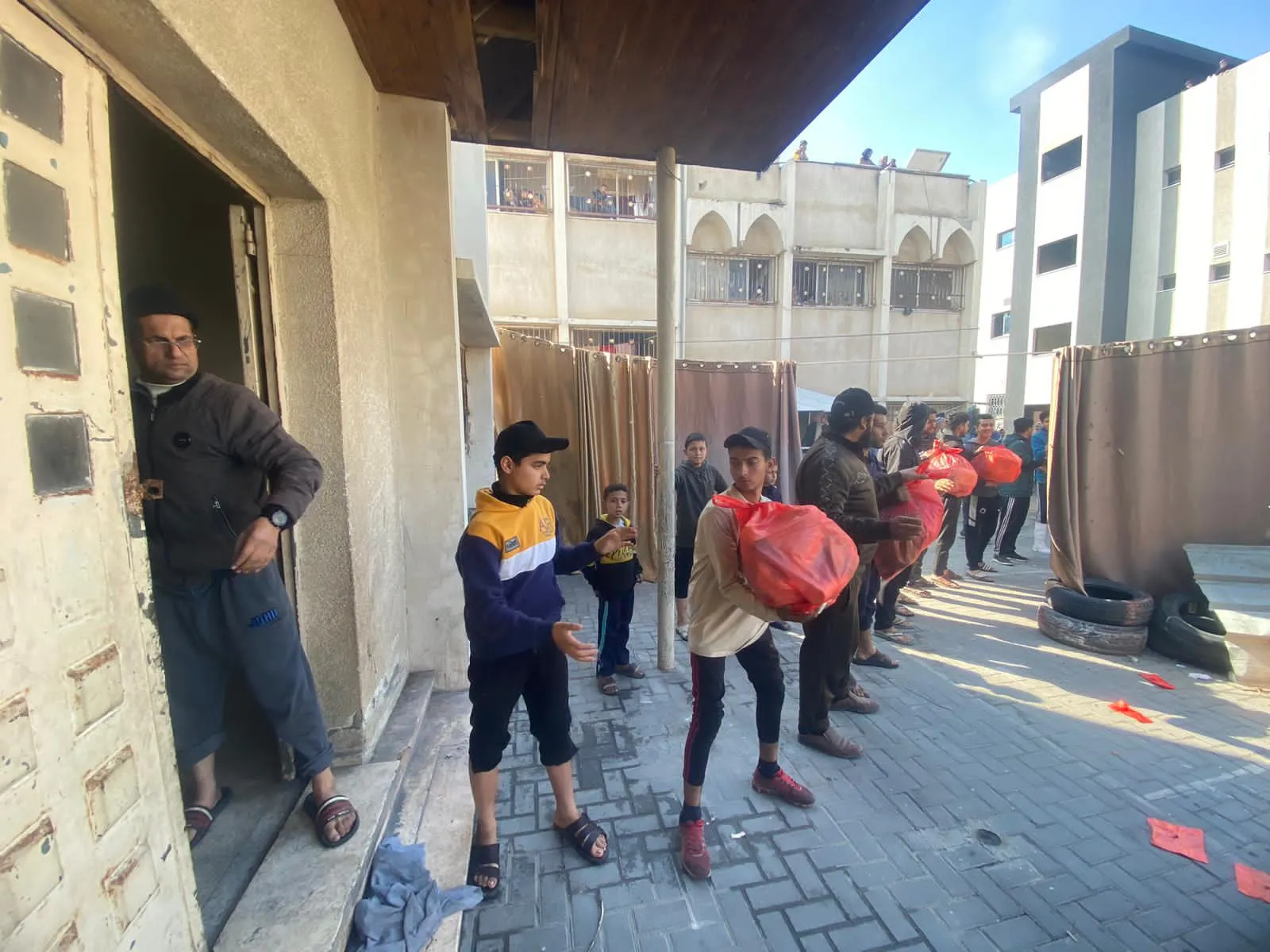While some electricity sources were cut off in the beginning of the escalation, Gaza’s single power plant in Deir al-Balah ran out of fuel mid-October. The lack of back-up generators has shut down bakeries, hospitals, water pumps, and other key services such as sewage treatment facilities.
“As this war continues, we try to find new words to capture what is unfolding,” Tibi went on.
“We try to find ways of describing what people in Gaza are going through, hoping that our accounts will finally bring an end to the bloodshed. Five months since the beginning of the latest war, we are at a crossroads, holding our breath for what is coming next.”
CARE commissioned Dr. Xi Li to conduct this analysis of satellite imagery of Gaza. He used remote sensing images to evaluate the evolution of the conflict in Gaza, by comparing the levels of light in September 2023 and a series of images taken between October 2023 and January 2024. CARE had previously commissioned Dr. Xi Li for similar analyses related to the conflicts in Syria and Yemen.


